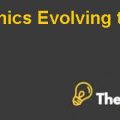Supply Chain Finance at Procter & Gamble Case Study Solution
Working of SCF Program:
The SCF program required the respective parties to enter in to three bilateral (two party contract). The contract the three parties i.e. the supplier, the buyer and the intermediary (bank). There are also three contracts i.e. commercial contract (a contract between P&G and the supplier with specified products and payment terms), service contract (a contract between the P&G and the SCF bank with the specified payment terms) and a financing contract (a contact between the supplier and SCF bank through discounting the payment). If the supplier of P&G requires an early payment then the supplier go to the bank and claim the P&G invoice and receive a cash in exchange for discount payment. The P&G would pay the face value on due date to the bank.
Beneficiary:
It provide benefits to all of the three parties in many ways such as through the SCF program the P&G to extend the payment terms, which would reduce the cash conversion cycle of the company as well as lower the financing needs of the company. Furthermore, it is positively impact on the cash flows of the company. Moreover it is beneficial for the supplier in such a way that the supplier would receive a payment with in short period at a very minimum discount and fulfill the current working capital requirement of them. Furthermore, it would allow the suppliers to lower the funding needs, whichwould ultimately improve the liquidity and leverage position. In addition to this, the suppliers are enabled to cash the invoice any time when they need a cash rather than borrowing from bank and the supplier receive the payments faster at lower cost. It is also beneficial for the bank in such a way that the bank charges its service fee from the suppliers who want the early payment which ultimately improve the revenues of the bank.
The SCF financing rate are considered to be competitive because the bank charge the LIBOR+ 1% spread as its fees by multiplying the number of the loan days. In addition to this, the bank charge a nominal spread as a fee, which is considered to be competitive.
- P&G claims that SCF is a win-win-win program? Is that true? Does anyone lose?
Win-Win-Win Program:
P&G negotiates many of its suppliers on the extended payment term of the company. According to P&G, SCF is a win- win strategy for both parties i.e. buyer and supplier. It would allow both the companies to negotiate on their favorable terms and conditions, let’s suppose if the suppliers need an earlier payment then the supplier would go to the bank and cash the invoice on some discounted term. The discounted terms are very minimal so I think it would not cause any loss incurrence to the supplier. This would allow both the companies to get the cash on hand on their favorable terms and conditions. The company would be able to extend its payments terms, which ultimately improves the cash flow, liquidity position and leverage position of the company. Furthermore it would lower the financing needs of the company as well as its cash conversion cycle. The suppliers also get earlier payment on the favorable terms or minimum discount, which also improves the cash on hand, leverage and liquidity position. Furthermore, the supplier would not require any addition funding due toextensional payment terms and would not bear any burden of loan.
In short it is a win-win-win strategy, because it benefits all the three parties that are involved in this contract. The supplier receive the payments faster at lower cost. P&G would then be able to extend its payment terms and SCF bank receives a fee for its services.
- Should Fibria continue to use the SCF program?
Recommendation:
It is recommended that Fibria should continue to use the SCF program, because by doing so the company would not require any additional funds to fulfill its working capital requirement. If the company would not use the SCF program then the late payment terms of P&G and other buyer of the company would enable the company to take loan from banks, which ultimately cause the company to have more leverage. The company’s days of receivables would be increased, which would furtherincrease the cash conversion cycle and lower the cash flows of the company. The company already has a higher debt burden, dye to whicha further increase in debt amount is assumed to be a risk for competitive position of the company. By using the SCF program, the company would not hold any further short term debt in its financial books.
Conclusion
P&G is one of the market leader in the consumer packaged goods (CPG). The cash conversion cycle of the company is highly disturbed because the company has made earlier payments to its suppliers (external partners) in comparison to the industry average. Due to this, the company requires an addition working capital requirement. The company fulfill its working capital requirement by taking loan from bank, which ultimately improves the leverage position of the company. In order to reduce its cash conversion cycle and to improve its liquidity position, the company announced to extend its payment terms for its suppliers. In addition to this, the company also introduced a SCF program in order to maintain its long term relationship with its suppliers. The SCF program benefits both the parties in such a way that P&G would be able to extend its credit terms that lower the funding needs of the company, which would be beneficial for the suppliers because they would get the earlier payment at a minimum discount.................................
This is just a sample partical work. Please place the order on the website to get your own originally done case solution.











